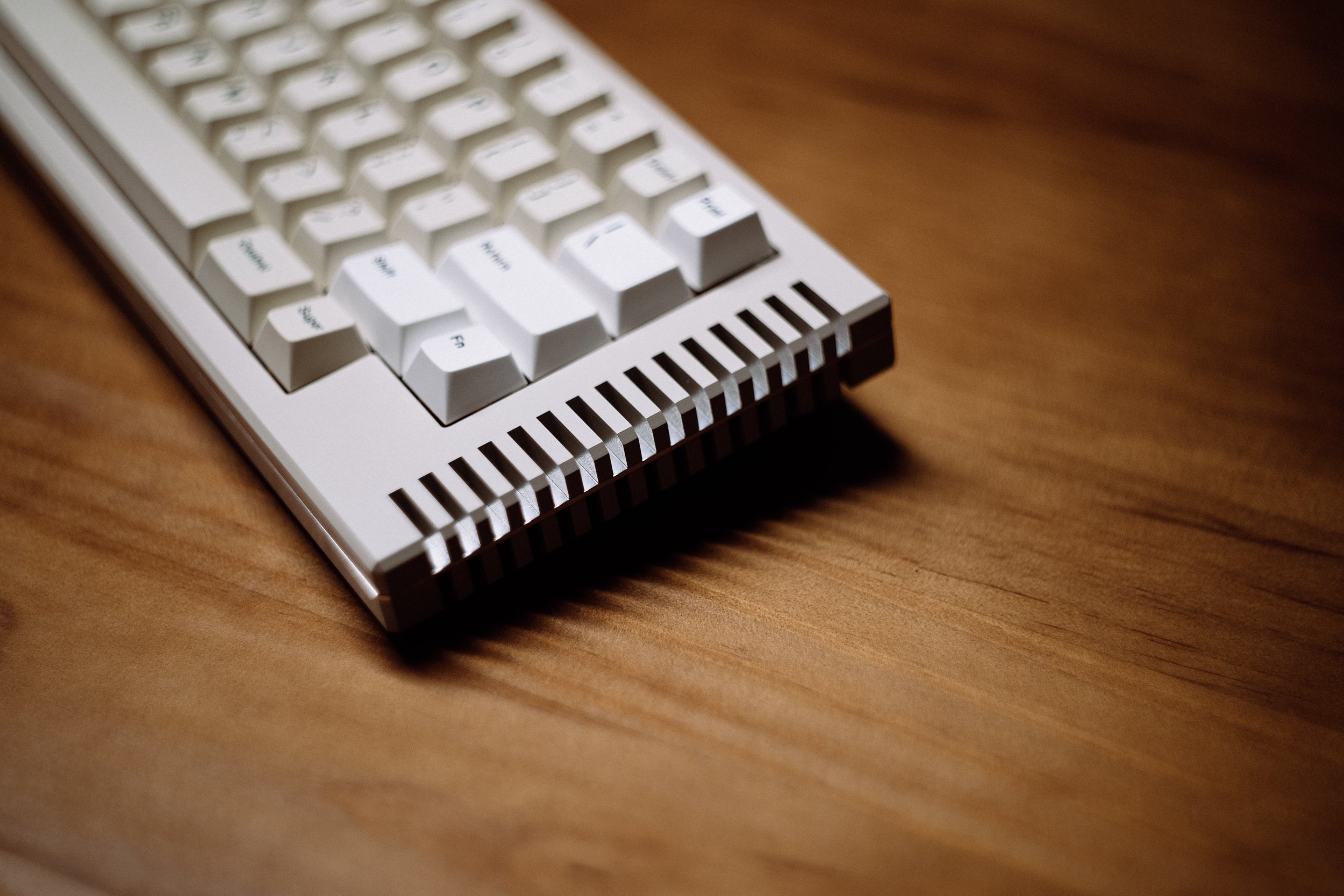Thermal by Wilba.Tech x RAMA
The One that I love but don’t recommend buying

The Leaf Spring Mount
First off, typing on the Thermal is quiet with standard switches. Personally, I think only long poles or highly clacky switches make this keyboard shine because of its implementation of the leaf spring mount.
I’ve had a thorough discussion with Wilba on whether or not this is a leaf spring mount since in my eyes, it behaved pretty similar to that of modern gasket mount keyboards. The plate is held in place by the case with poron gaskets, whose original function is to act as a force break mod; this didn’t help my wrong impression of it. And the way cutouts are made make it seem as if it is a gasket mounted, flex cut plate. It certainly is how modern gasket mounted keyboards are implemented. Think QK65 and the like.
The only error I made was that I got it the wrong way around. Modern gasket mounted keyboards are actually variants of a “leaf spring” structure unlike traditional gasket mounted ones, which have long plate tabs clamped between foam strips. This leaf spring differentiates itself in that the plate, that is clamped either by the case or foam strips, is isolated from the main section of the plate by a bridge. Different variants of these isolation techniques exist in different keyboards (i.e. Salvation, QK65, Owlab Spring etc), but they all function similarly.
Regardless, this implementation of leaf spring mount actually attenuates the acoustics of the Thermal, making standard switches quite silent. Typing is also stiff since I opted to use the standoffs to prevent the PCB from flexing too much and shorting due to contact with the case.
Paranoia, I know, but doesn’t hurt to be safe.
The Keyboard
Anyway, the biggest talking point about this keyboard has got to be these fin-like structures on the left and right, extending all the way down the bottom case. And judging by its name Thermal, some inspiration has got to be drawn from heat sinks, whose purpose is to dissipate heat.
The mid plate is sandwiched by the top and bottom cases, runs through the fins, providing a nice accent look. This polish aluminium plate isn’t showing as much through the cream-coloured case but for more contrasty colours like a black in a red case, I imagine the Thermal looks really gorgeous.
Building this keyboard is straightforward as well. The usual steps apply -stabilizers on PCB, plate on PCB, install switches, install gaskets in case, put assembly into case, screw it all together and you’re done.
The Aesthetics
If I were to get the Thermal today, it will be for nothing else but its unique case design. I also quite like the degree of stiffness, even with the standoffs. Not too stiff with a tiny give.
However, the deal breaker for me is that the Thermal’s acoustic range is too narrow for my liking and I see myself getting tired of a quiet typing pretty easily. While I don’t have a preference on the pitch (thock/clack), I value tactile and acoustic feedback a lot. And if it’s too quiet, something just seems off to me.
Conclusion
Overall, priced at around US$400, the Thermal is a little pricy given the modern landscape. These days, US$350 tops would be where I put the Thermal. Don’t get me wrong, if you can get your hands on a Thermal, it is still a great keyboard and it’s nowhere near as bad as its reputation. But is it worth the risk to buy a new one at full price now from the source, not knowing when it will deliver? It is rather unfortunate that Rama’s products are, in my eyes, still considered top notch, just that the Rama himself isn’t.
Good news is that Salvun is arranging for in-stock production of the Thermal. Do what you want with this information.





